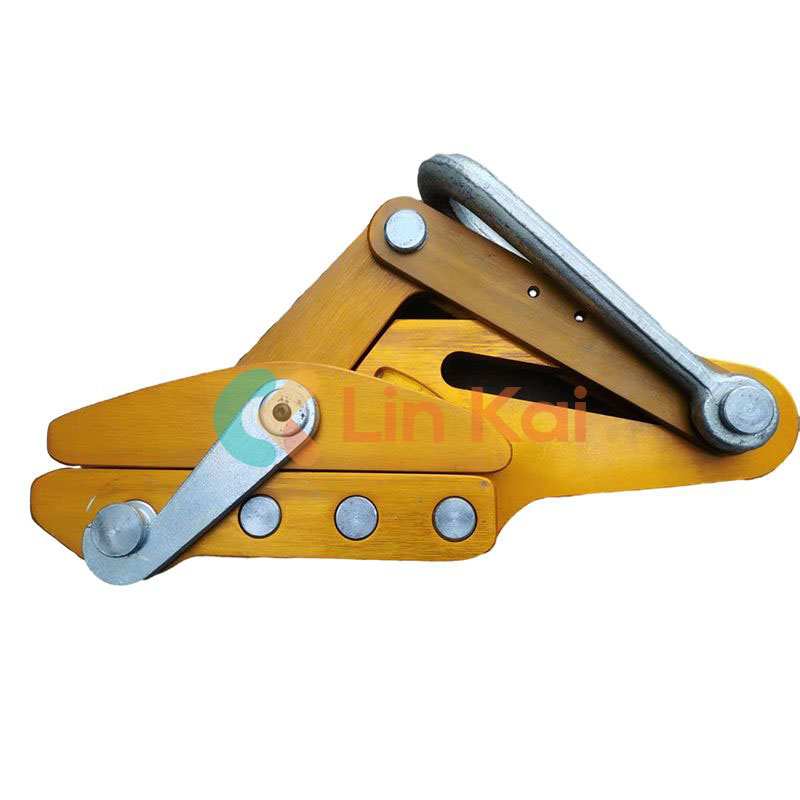
- English
- Español
- Português
- русский
- Français
- 日本語
- Deutsch
- tiếng Việt
- Italiano
- Nederlands
- ภาษาไทย
- Polski
- 한국어
- Svenska
- magyar
- Malay
- বাংলা ভাষার
- Dansk
- Suomi
- हिन्दी
- Pilipino
- Türkçe
- Gaeilge
- العربية
- Indonesia
- Norsk
- تمل
- český
- ελληνικά
- український
- Javanese
- فارسی
- தமிழ்
- తెలుగు
- नेपाली
- Burmese
- български
- ລາວ
- Latine
- Қазақша
- Euskal
- Azərbaycan
- Slovenský jazyk
- Македонски
- Lietuvos
- Eesti Keel
- Română
- Slovenski
- मराठी
- Srpski језик
How does overhead line stringing equipment support the development of modern power grids?
2024-09-07

The use of OHL stringing equipment has greatly enhanced the efficiency and effectiveness of power grid construction and maintenance. Some commonly asked questions related to this equipment include:
What are the types of Overhead Line Stringing Equipment?
OHL Stringing Equipment includes pullers, tensioners, reel stands, anti-twisting ropes, and conductors, among other types.
What are the advantages of using Overhead Line Stringing Equipment?
Using OHL stringing equipment greatly increases efficiency and safety while reducing labor costs. It also enables higher tension levels for overhead power lines, which improves transmission capabilities and helps to reduce the frequency of outages.
How important is Overhead Line Stringing Equipment for the development of modern power grids?
OHL stringing equipment plays a critical role in the construction and maintenance of modern power grids, enabling the safe and efficient installation of conductors, wires, and cables across power lines. Without this machinery, power grid construction would be much more costly, time-consuming, and hazardous.
In conclusion, Overhead Line Stringing Equipment is an essential part of modern power grid construction and maintenance. Its use has greatly improved efficiency, safety, and transmission capabilities while reducing costs. By utilizing such equipment, power companies can more effectively meet the increasing demand for energy while maintaining a reliable and resilient power infrastructure.Ningbo Lingkai Electric Power Equipment Co., Ltd. is a leading manufacturer of Overhead Line Stringing Equipment, providing high-quality products to power grid companies worldwide. With its commitment to innovation and customer satisfaction, the company's mission is to provide customers with the best possible stringing solutions. Visit https://www.lkstringing.com for more information or contact them at nbtransmission@163.com
References
1. Chen, Y., et al. (2019). Research on OHL stringing equipment and its application. Proceedings of the 10th International Conference on Power Electronics and Intelligent Transportation System.
2. Kamar, K. A., Al-Khafaji, N. A., & Li, X. (2020). Monitoring the Condition of Overhead Power Supply Systems based on Stringing Equipment Information. International Journal of Power Electronics and Drive Systems, 11(4), pp.1708-1717.
3. Singh, A., & Gupta, A. (2018). Intelligent control strategy for OHL Stringing based on hybrid pixel sensing mechanism. Journal of Electrical Systems and Information Technology, 5(2), pp.570-585.
4. Zakaria, H., et al. (2019). A study of the performance of reel stands in overhead line stringing. Journal of Electrical and Electronic Engineering, 9(1), pp.1-7.
5. Zhang, Z., et al. (2020). Design and analysis of an automatic compensation system for OHL stringing equipment. Journal of Intelligent and Fuzzy Systems, 38(1), pp.1003-1011.
6. Yang, L., et al. (2018). Overhead line stringing tension control system based on wireless sensor network. Journal of Power Electronics, 18(6), pp.1869-1881.
7. Fatima, S., et al. (2020). Real-time monitoring and control system for OHL stringing equipment. International Journal of Electrical Power and Energy Systems, 120, p.106004.
8. Ren, Y., et al. (2019). Study on the force measurement of OHL stringing. Journal of Shanghai University of Electric Power, 38(1), pp.1-12.
9. Guan, N., et al. (2018). Research on the application of ADAMS in overhead line stringing equipment. Journal of Physics: Conference Series, 1069(1), p.012008.
10. Saleem, M. (2021). Control Scheme for OHL Stringing Tensioner Considering Inertial and Frictional Forces. In 2021 International Conference on Control, Automation and Diagnosis (ICCAD) (pp. 230-234). IEEE.
